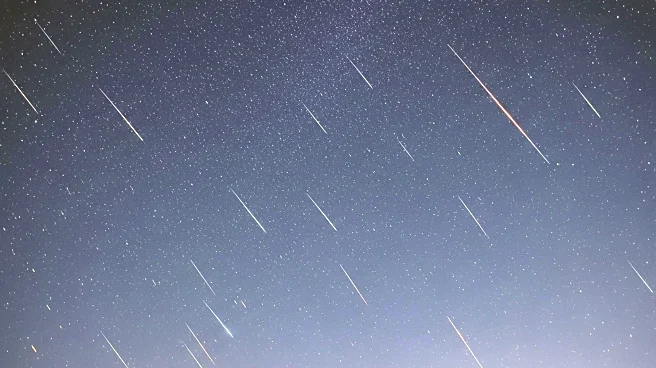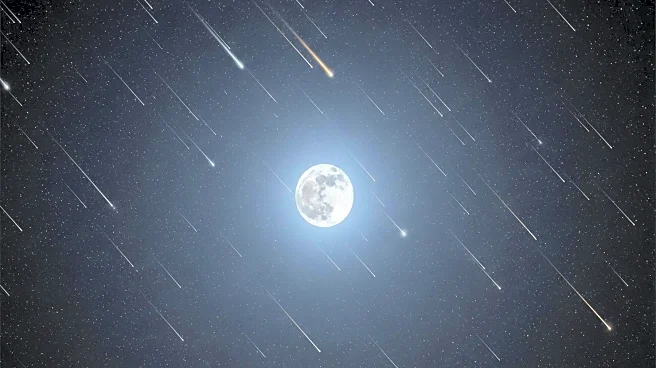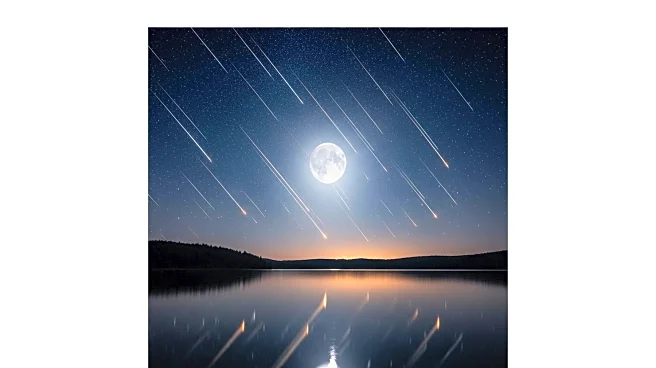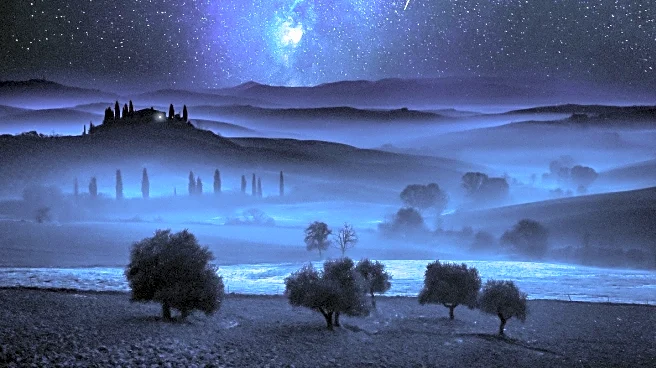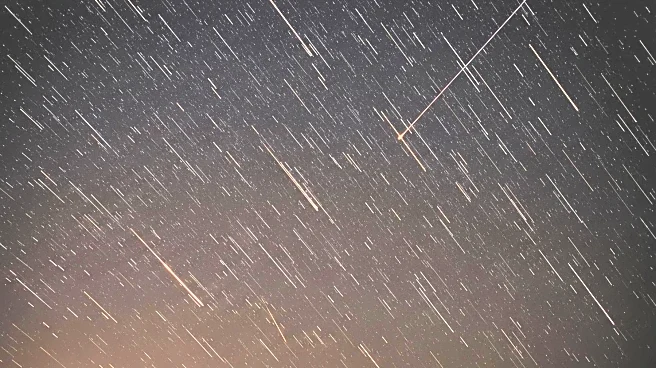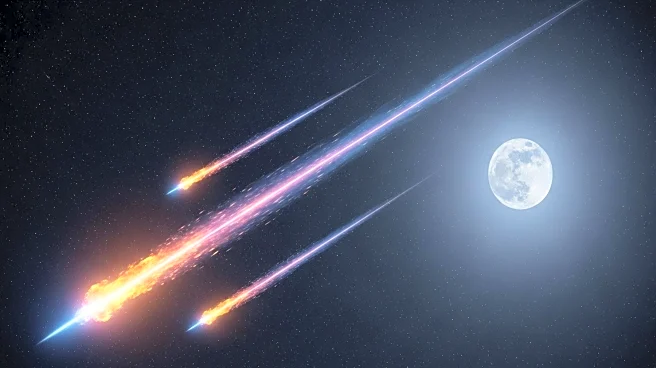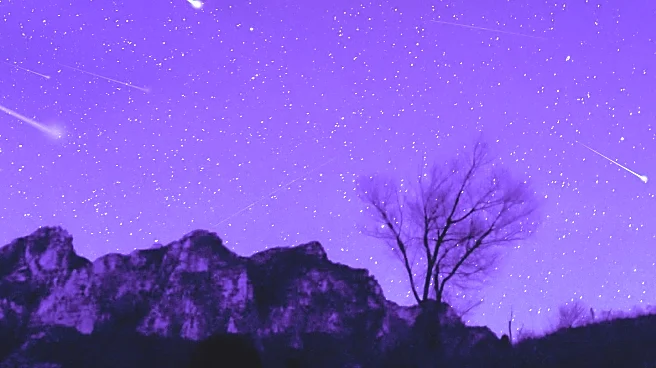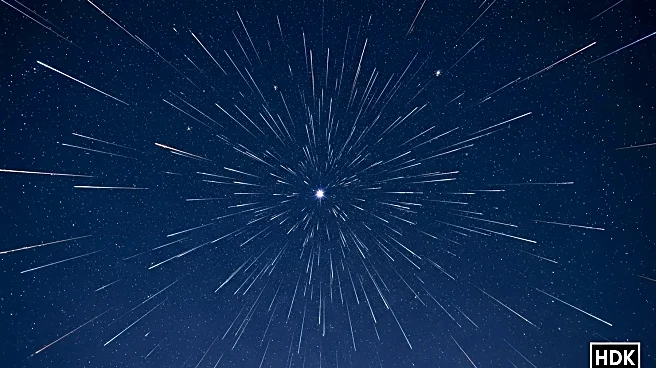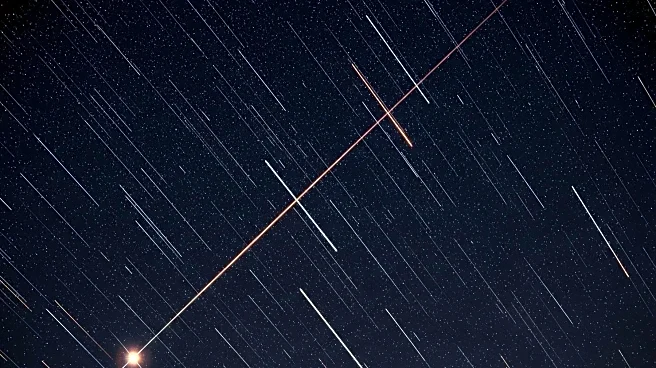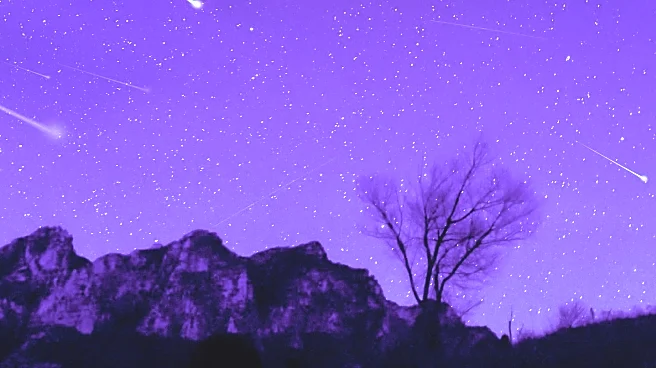What's Happening?
The Draconid meteor shower is set to peak on October 8, providing a natural spectacle as meteors streak across the sky. This annual event occurs when Earth passes through the debris trail of comet 21P/Giacobini-Zinner. The shower is active from October 6 to October 10, with the peak expected at 3 p.m. EDT on October 8. During this time, up to 10 meteors per hour may be visible under optimal conditions. However, the brightness of a 93%-lit waning gibbous moon could hinder visibility of the fainter meteors. The meteors appear to originate from the constellation Draco, located near the Big Dipper in the northwestern sky.
Why It's Important?
Meteor showers like the Draconids offer a unique opportunity for both amateur and professional astronomers to observe celestial phenomena. This event is significant for educational purposes, inspiring interest in astronomy and space science. The visibility of the meteors, despite the moonlight, can also serve as a reminder of the vastness and beauty of the universe. For those interested in astrophotography, capturing images of the meteors can be a rewarding challenge, promoting technological engagement and skill development in photography.
What's Next?
Observers are encouraged to find a dark location away from city lights to maximize their chances of seeing the meteors. The best time to view the shower is at sunset on October 8, when the radiant point is highest in the sky. For those interested in photographing the event, using a camera with appropriate settings is recommended. The next major meteor shower, the Orionids, is expected later in October, providing another opportunity for stargazing enthusiasts.

